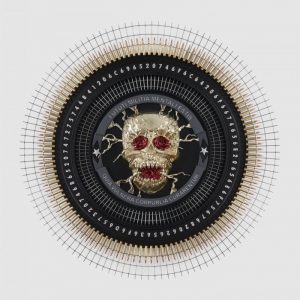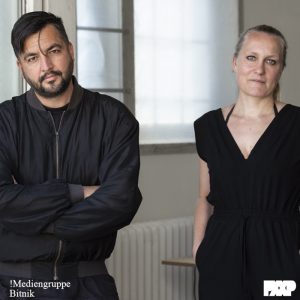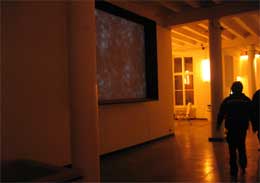 Just read what might be the best review that Transmediale deserves this year, i don’t agree on every point but many remarks are quite spot-on.
Just read what might be the best review that Transmediale deserves this year, i don’t agree on every point but many remarks are quite spot-on.
One of the highlights of Transmediale for me was the open studio at Tesla. The place is nice, big and welcoming, most of the installations were very good and it was great to get the opportunity to talk with the artists in residency at Tesla.
In Sei Personaggi in Cerca d’Autore (Six Characters in Search of an Author), by Luigi Pirandello, the audience is confronted with the unexpected arrival of six characters — father, daughter, mother, son
and two little children– during the rehearsals for a play (incidentally, one of Pirandello’s own) who insist on being given life, on being allowed to tell their story in a theatre play.
Until they are not concretized into a play, these figures are ‘alive’ and not existent at the same time. Their scenes are written inside of them and ‘force’ the family to search for a stage and an audience.
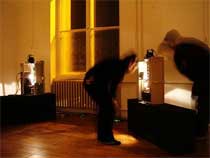
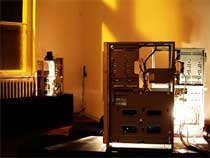
In the continuation of the Sei Personaggi’s search, Zurich-based artist Valentina Vuksic (who created another installation i like a lot: Harddisko) has hardware and software modules turned into actors of “plays in computers.” Instead of actors, the Sei Personaggi Part 2 stars disused hardware that affects the course of the play. Each computer is assigned a character and microphones relay the passages of the manuscripts they are reading. The programs allow the computerized characters to mutually control each other according to the signs they are processing. A particular kind of machinic dialogues is developing inside the computing systems.
Time beating processors and working memories determine time and space of this fictitious, not visible stage, which spreads over the interiors of the networked machines. Microphones follow the fleeting trails of the characters inside the systems’ kernels.
It’s quite difficult to write down what it feels like to step right into a computer theatre play. I loved the experience. It’s a mix of listening to the artist pointing to the “two little child computers” over there and the “mother” one and talking about their behaviour with fondness. There’s also the visual impact of seeing these “old” machines (they date back from the nineties) communicating and emitting beeps and squeaks in a setting that felt so intimate. Lastly i’ve always liked the idea of giving a geeky twist to masterpieces of literature.
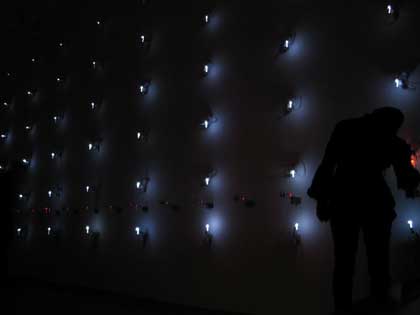
It was nice to stumbled upon another work of Seiko Mikami whose Gravity and Resistance – Gravicells piece had enchanted Transmediale back in 2005. Her latest installation, Desire of Codes was spectacular, poetic and mesmerizing.
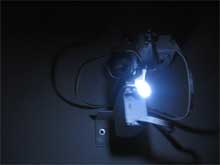 The piece is a take on our data-obsessed society and the storage of individual information in bar codes.
The piece is a take on our data-obsessed society and the storage of individual information in bar codes.
60 moving elements, made of sensors, mini lightspots and surveillance cameras, are fixed on the wall. Each of them has a barcode carved on it and follows the moves of visitors, thus showing the strict connections between human and computerized body. It had the same shock and awe effect on me as Erwin Redl‘s Matrix IV had when i saw it in 2001 in Brooklyn. Plus, i loved the way the installation was chirping like a swarm of insects.
Upstairs Rodrigo Derteano had installed a few elements of his bigger installation Recomputing Space, a psychogeographic study of urban noise as a sound installation.
Following the commands and rhythm imposed by an algorithm, two persons walked with microphones around chosen public places in the city, recording noise, language, music and the sound of their own steps.
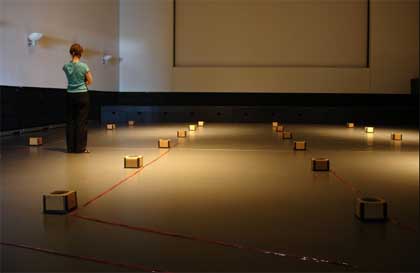
The algorithm they followed is composed of a number of simple commands (left, right, forward, back, stop) and a metronome, telling them how to walk and providing the walking rhythm. The recorded soundtracks are later played back in the installation, which consists of 30 loudspeakers ordered in a 5×6 matrix. The sounds “move” from loudspeaker to loudspeaker, reconstructing the paths of the microphonists.
The work feels very intimate, i was there and somewhere else, sharing moments recorded months ago by the “microphone operators”. I wish i could have experienced it on its full scale (the studio of the artist was way to small to install all the speakers.)
Image of Desire of Codes by Andy Polaine. Although it’s nice to be able to read the views of someone whose tastes and knowledge of the field differ so much from mine, I promise we’ll stop linking each other this month.
My images from Tesla open studio.

